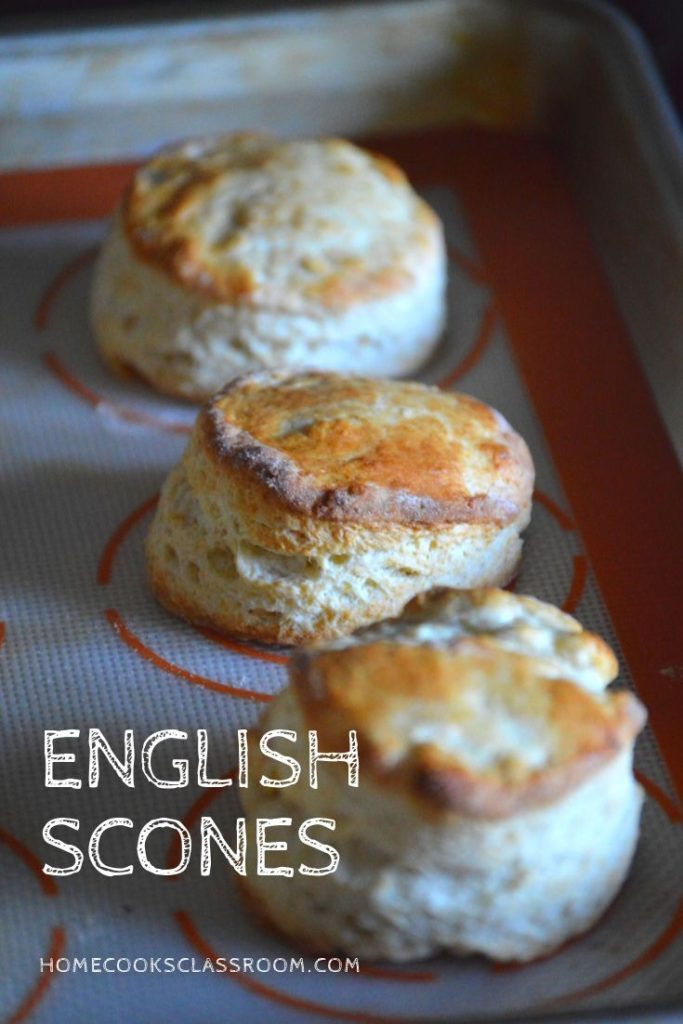
In case any of you missed out, last week we got down to business by making delicious four berry jam. It turned out wonderful, however, after making and jarring our jam I realized that I had forgotten one very important thing. We need something to spread our jam on! Sure we could just toast up some slices of bread and call it a day, but that just didn’t feel right. A jam this special deserved something great to spread it on. You know something that screams I’m cultured and refined. And the only thing that fit the bill was some good old tea time English scones.
Now I’ve made my fair share of scones before, such as our previous recipe for raspberry scones. However, I’ve never attempted to make authentic English scones, which while having similar ingredients are different in the way they are prepared.
It basically all comes down to the fact that English scones are cut into a circular shape, unlike the triangle-shaped scones we make in the U.S. And this isn’t just for looks as this shape allows the English scones to achieve two things. First, this shape allows the scones to rise up and achieve a lighter, some might even say fluffier texture. Which is nice because traditional American style scones can be pretty dense. Secondly, the structure of the risen English scones allows one to split a scone right through the middle, just like one would do with an English muffin. This makes the English scone a perfect canvas for spreading all sorts of things.
So get your kettle to a boil and extend your pinky finger because it’s about to be tea time with these delightful English scones.

Tips, Tricks & Suggestions
- If your scones don’t end up rising then don’t fret as that is a common issue with first-timers. There are three main reasons why it could be happening. First and most likely you have simply over kneaded the dough in step 5. Just make sure to knead it until it forms a rough dough and no more. The second possible reason is that you aren’t cutting out the scones properly. Always make sure to cut down and up, and never twist as that can cause the sides to seal resulting in them being unable to rise. If you’ve done both of those properly then the only other reason your scones aren’t rising is that your baking powder is too old.
English Scones Recipe
Prep time: 10 minutes
Cook time: 15 minutes
Servings: 10 to 14 scones
Ingredients
2 Cups of all-purpose flour
⅔ Cup of whole milk
6 Tablespoons of unsalted butter, softened
1 Large egg
2 Tablespoons of sugar
4 Teaspoons of baking powder
½ Teaspoon of salt
Instructions
- Preheat your oven to 425 degrees Fahrenheit
- Mix together the butter and dry ingredients: Get out a food processor and add in the flour, salt, sugar, and baking powder. Pulse it a few times so that all of the dry ingredients are mixed together. Then add in butter and pulse it about 10 times or more so that the butter is incorporated into the mixture.
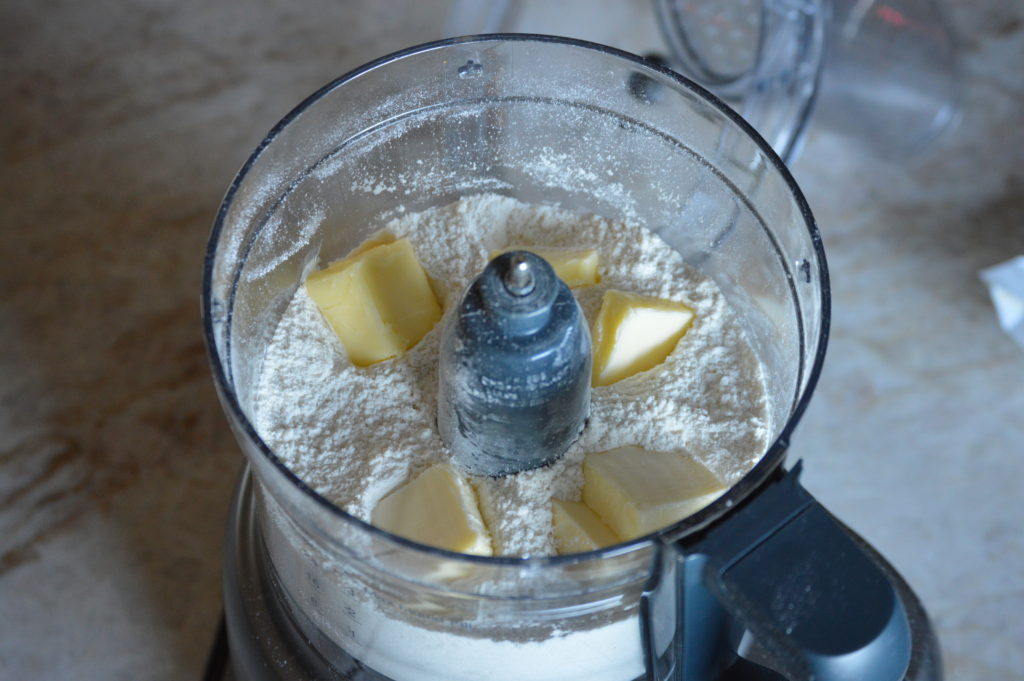
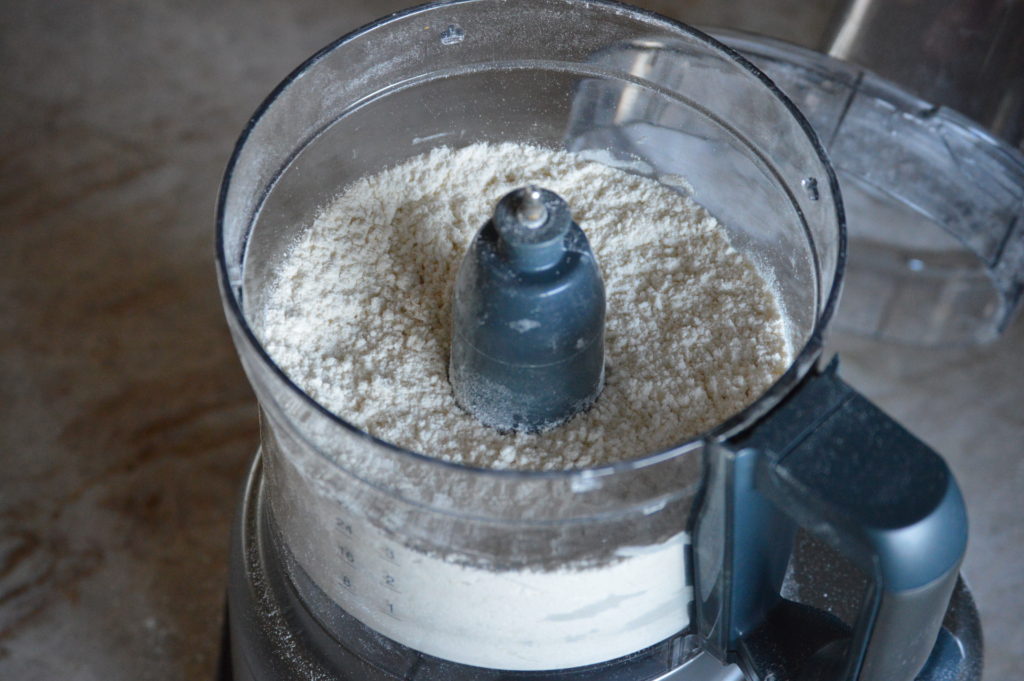 Make sure that there aren’t any large chunks of butter it should have the appearance of coarse sand. Transfer this to a large mixing bowl.
Make sure that there aren’t any large chunks of butter it should have the appearance of coarse sand. Transfer this to a large mixing bowl.
- Mix together the wet ingredients: Get out a small bowl and whisk the egg in it. Then add the milk and stir it all together.
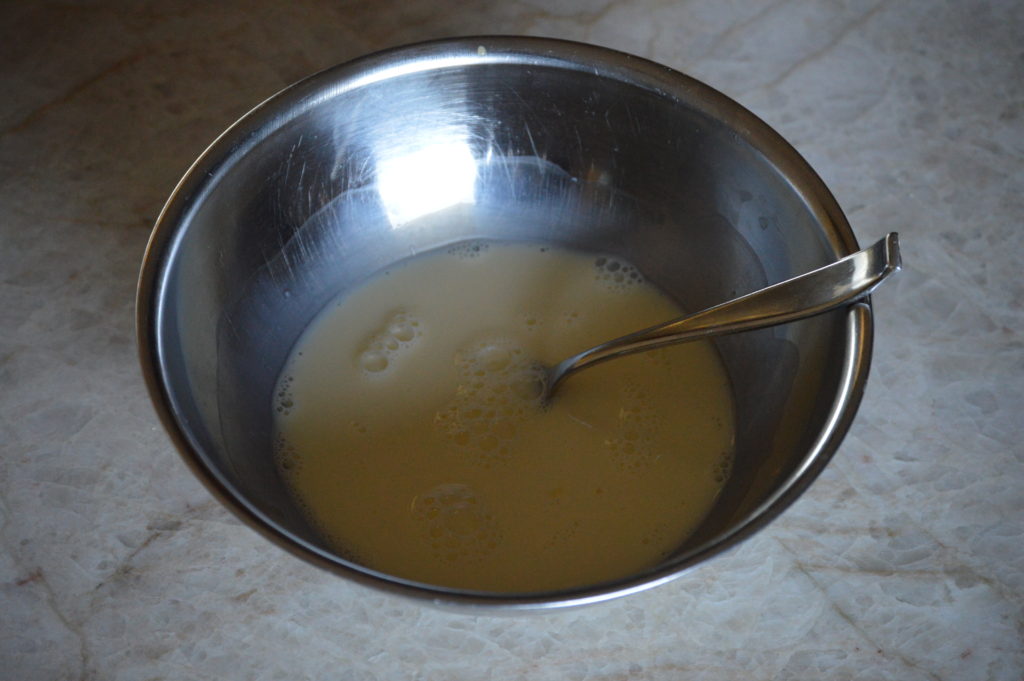 Set this bowl aside and reserve about 2 tablespoons of this mixture for an egg wash later.
Set this bowl aside and reserve about 2 tablespoons of this mixture for an egg wash later.
- Make the dough: Add the wet ingredients into the mixing bowl holding the dry ingredients.
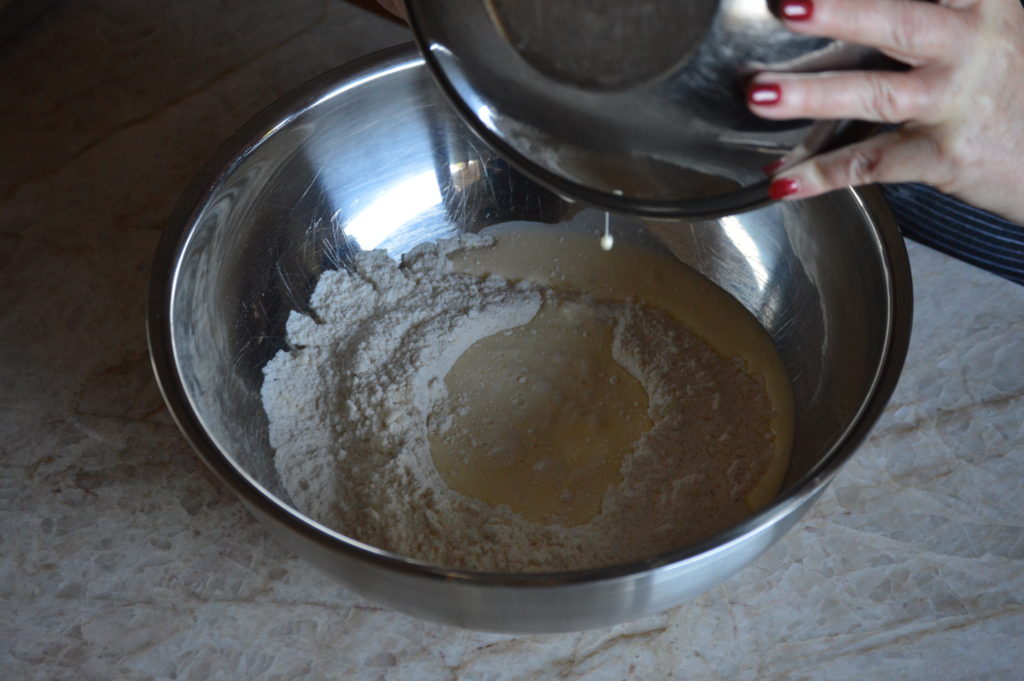 Then use either a wooden spoon or a spatula to stir everything together until the dough is formed.
Then use either a wooden spoon or a spatula to stir everything together until the dough is formed.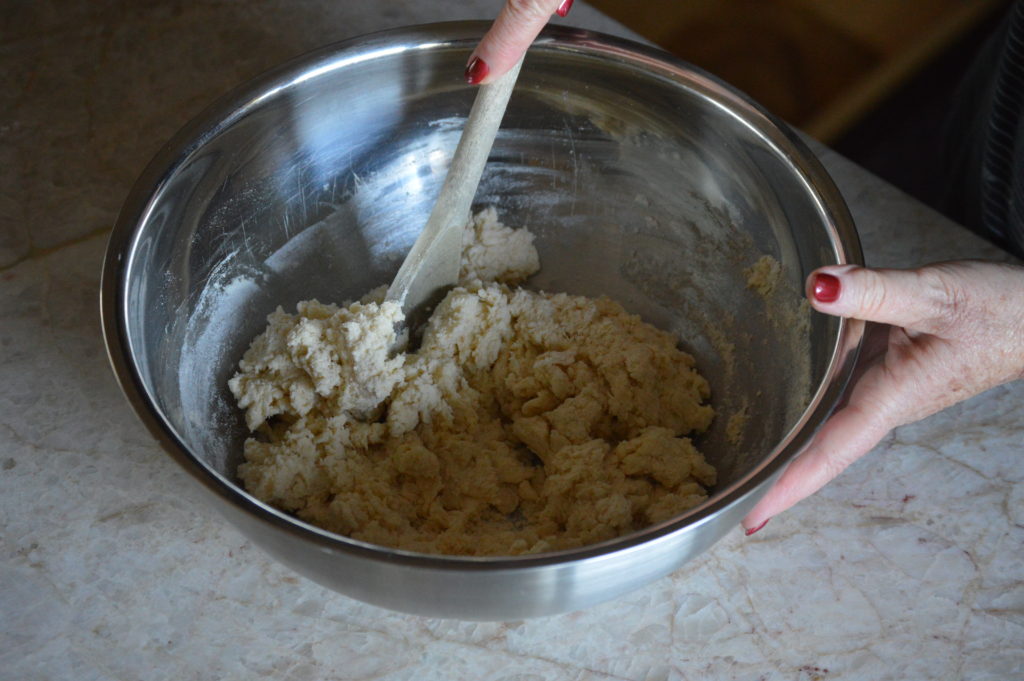
- Knead the dough: Lightly flour a clean and flat surface (i.e. your kitchen counter) and transfer the dough to it. The gently kneed the dough a few times until it just forms a solid and smooth piece of dough.
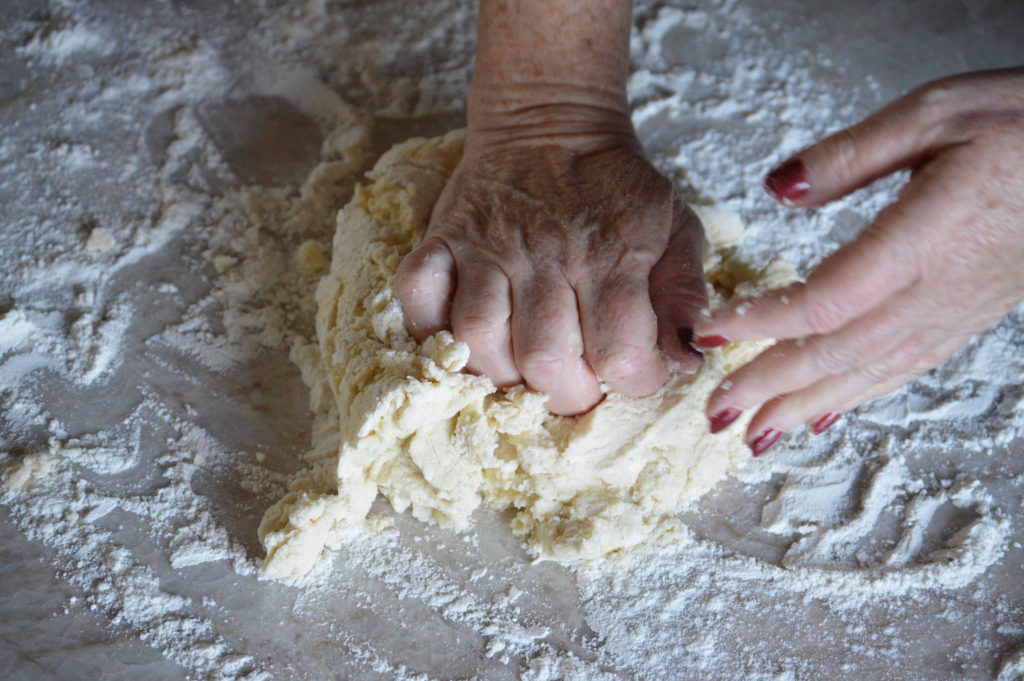 Make sure to not over kneed the dough as it could result in the scones not rising properly.
Make sure to not over kneed the dough as it could result in the scones not rising properly.
- Roll and cut out the scones: With the dough now made, roll it out so that it is roughly 1 to ¾ of an inch thick.
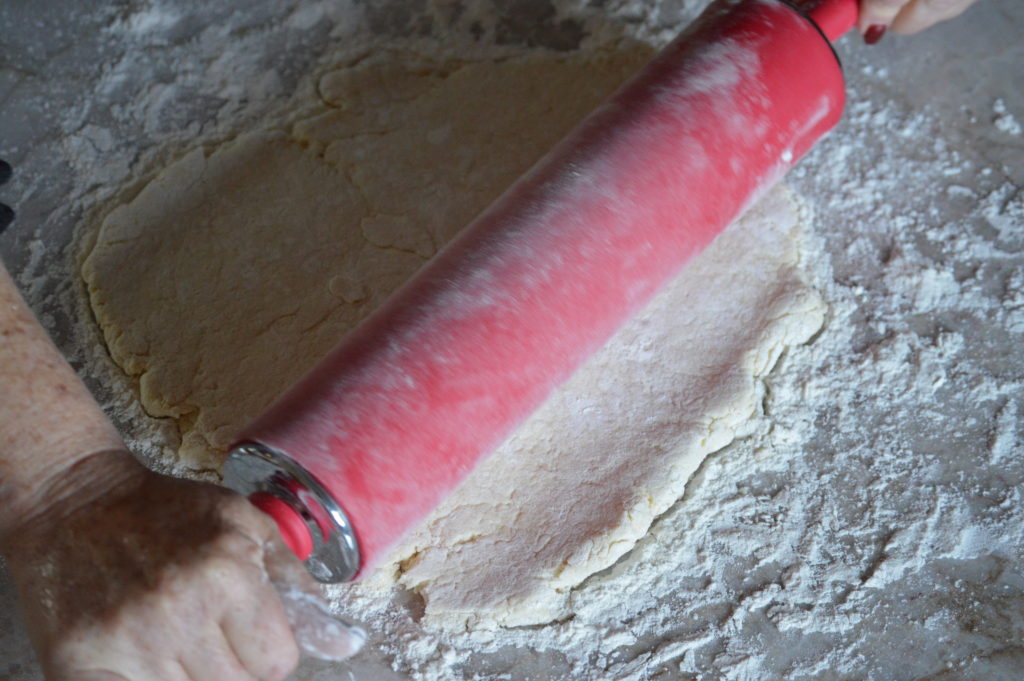 Then use a 2.5-inch circular dough cutter to cut out the individual scones. It is important that you only press down and up when cutting out the scones, if you twist while you cut it could result in the scones not rising.
Then use a 2.5-inch circular dough cutter to cut out the individual scones. It is important that you only press down and up when cutting out the scones, if you twist while you cut it could result in the scones not rising.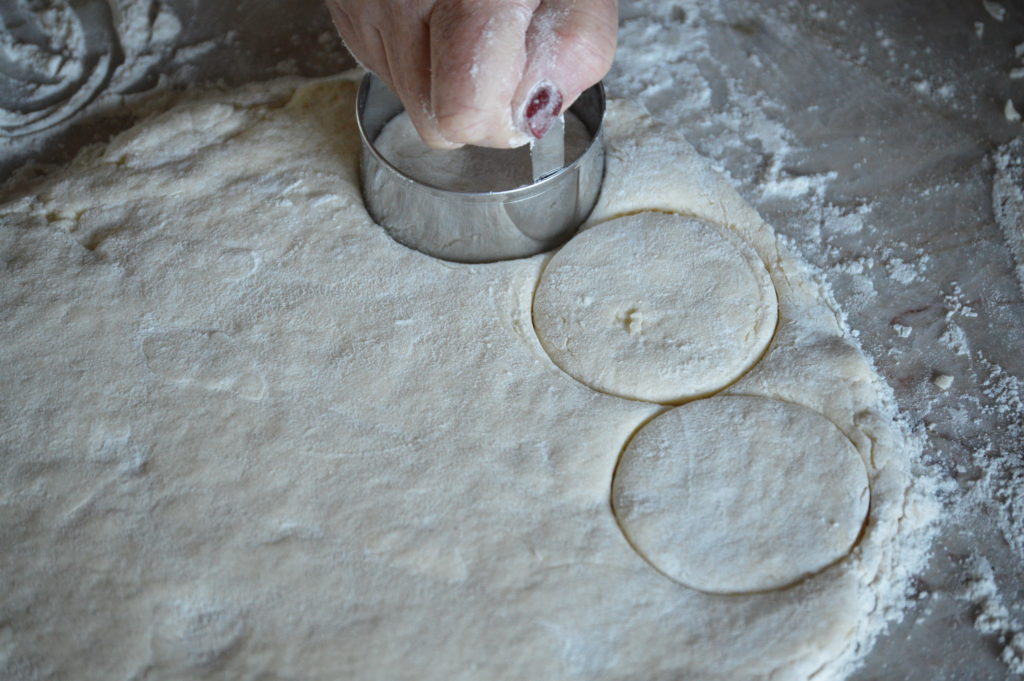 Once all of the dough is cut into scones transfer them to either a parchment paper or silicone mat lined baking sheet.
Once all of the dough is cut into scones transfer them to either a parchment paper or silicone mat lined baking sheet.
- Brush the tops of the scones with the reserved egg wash from step 3.

- Add the scones to the oven and bake for roughly 15 minutes, or until they browned up on top and risen twice their size.
- Let the English scones cool for a couple of minutes before enjoying them with some clotted cream and fresh jam!

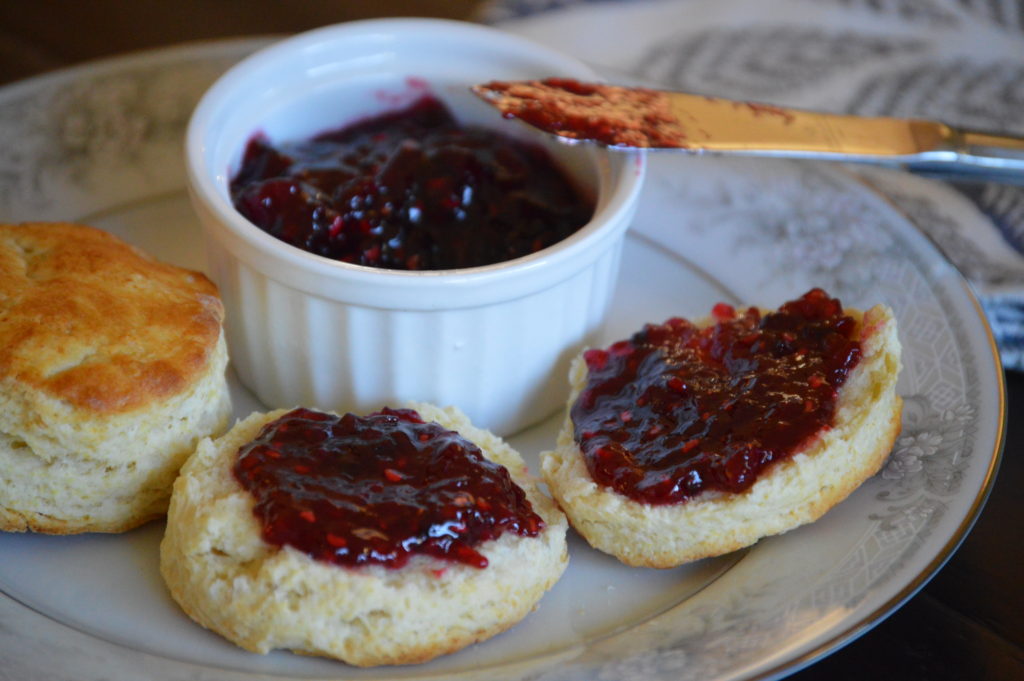
English Scones Recipe
Equipment
- round dough cutter
Ingredients
- 2 Cups of all-purpose flour
- ⅔ Cup of whole milk
- 6 Tablespoons of unsalted butter softened
- 1 Large egg
- 2 Tablespoons of sugar
- 4 Teaspoons of baking powder
- ½ Teaspoon of salt
Instructions
- Preheat your oven to 425 degrees Fahrenheit
- Mix together the butter and dry ingredients: Get out a food processor and add in the flour, salt, sugar, and baking powder. Pulse it a few times so that all of the dry ingredients are mixed together Then add in butter and pulse it about 10 times or more so that the butter is incorporated into the mixture. Make sure that there aren’t any large chunks of butter it should have the appearance of coarse sand. Transfer this to a large mixing bowl.
- Mix together the wet ingredients: Get out a small bowl and whisk the egg in it. Then add the milk and stir it all together. Set this bowl aside and reserve about 2 tablespoons of this mixture for an egg wash later.
- Make the dough: Add the wet ingredients into the mixing bowl holding the dry ingredients. Then use either a wooden spoon or a spatula to stir everything together until the dough is formed.
- Knead the dough: Lightly flour a clean and flat surface (i.e. your kitchen counter) and transfer the dough to it. The gently kneed the dough a few times until it just forms a solid and smooth piece of dough. Make sure to not over kneed the dough as it could result in the scones not rising properly.
- Roll and cut out the scones: With the dough now made, roll it out so that it is roughly 1 to ¾ of an inch thick. Then use a 2.5-inch circular dough cutter to cut out the individual scones. It is important that you only press down and up when cutting out the scones, if you twist while you cut it could result in the scones not rising. Once all of the dough is cut into scones transfer them to either a parchment paper or silicone mat lined baking sheet.
- Brush the tops of the scones with the reserved egg wash from step 3.
- Add the scones to the oven and bake for roughly 15 minutes, or until they browned up on top and risen twice their size.
- Let the English scones cool for a couple of minutes before enjoying them with some clotted cream and fresh jam!
Notes
Inspiration from other blogs
From Plated Cravings
From Curious Cuisniere


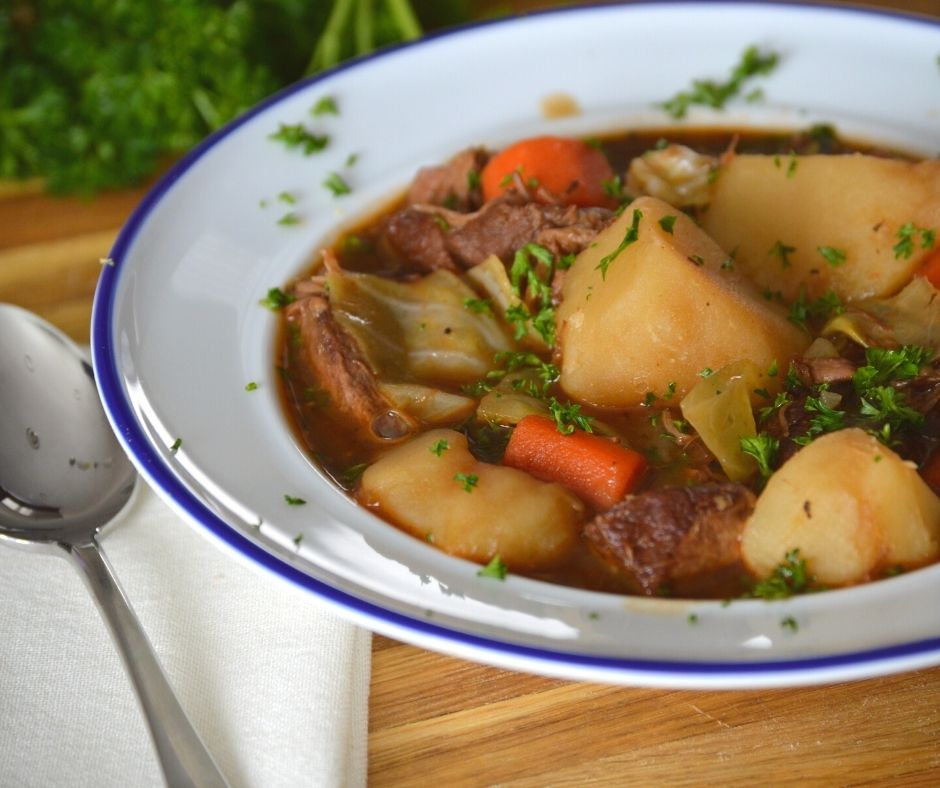
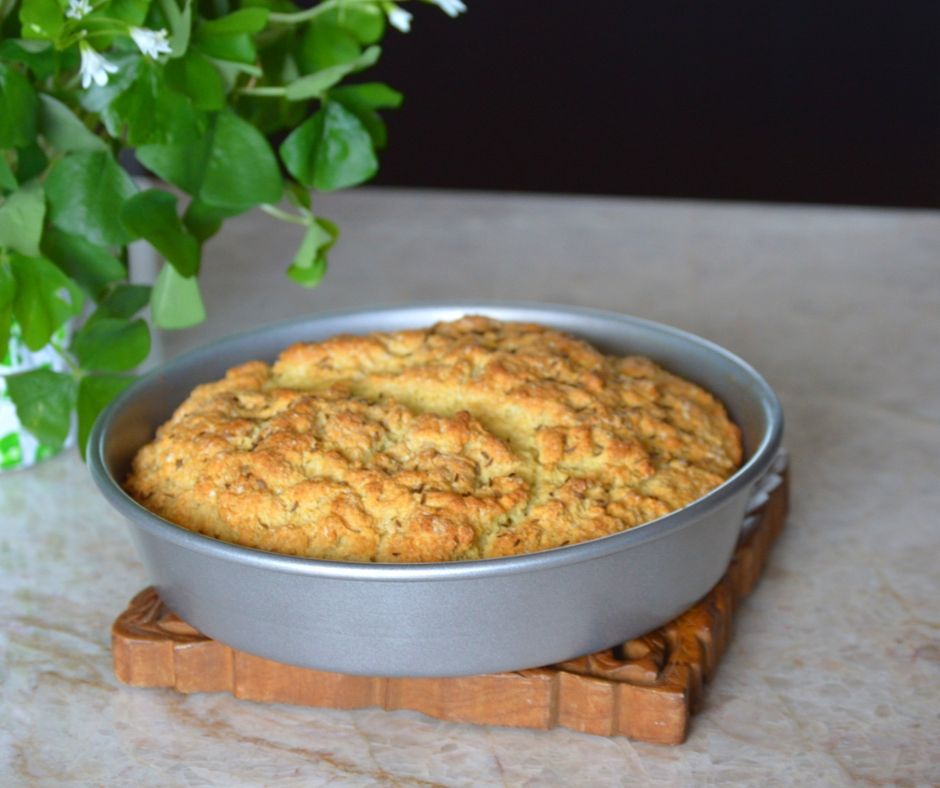
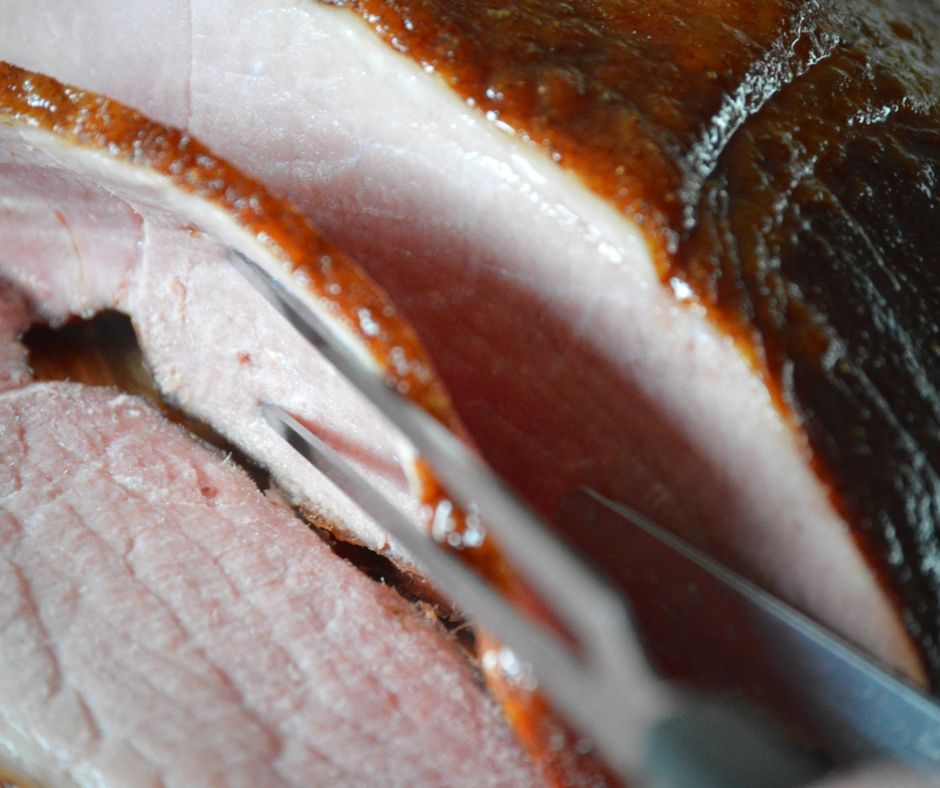
Can you add metric measurements? Appreciate it very much. My measuring 1 cup – 250grams. What is yours
No worries Sofie, I’m glad to help! For starters, all of the amounts for the ingredients are volumetric amounts not weight so they really should be converted into milliliters. So the 1 cup = 250 grams might be correct for some ingredients but not for others. That being said I’ll do my best to add weight (grams) measurements for each, it’s based on this chart from King Arthur.
The metric conversion would be
Flour – 1 cup = 237 ml, or 120 grams
Milk – 2/3 cup = 158 ml, or 150.3 grams
Butter – 6 Tablespoons = 90 ml, or 84.75 grams
1 Large egg (no conversion)
Sugar – 2 Tablespoons = 30 ml, or 12.3 grams
Baking Powder – 4 Teaspoons = 10 ml, or 8 grams
Salt – 1/2 Teaspoon = 2.5 ml, or 3 grams